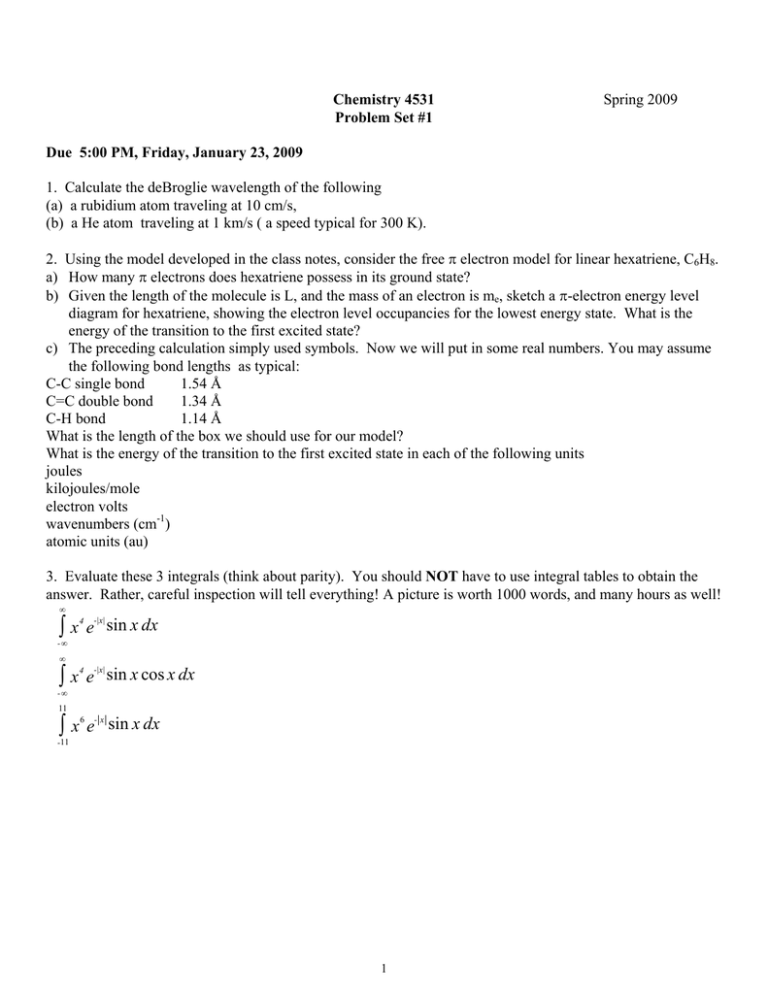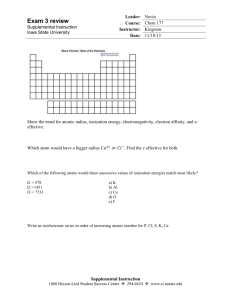x e xdx x e x xdx x e xdx sin sin cos sin
advertisement

Chemistry 4531 Problem Set #1 Spring 2009 Due 5:00 PM, Friday, January 23, 2009 1. Calculate the deBroglie wavelength of the following (a) a rubidium atom traveling at 10 cm/s, (b) a He atom traveling at 1 km/s ( a speed typical for 300 K). 2. Using the model developed in the class notes, consider the free π electron model for linear hexatriene, C6H8. a) How many π electrons does hexatriene possess in its ground state? b) Given the length of the molecule is L, and the mass of an electron is me, sketch a π-electron energy level diagram for hexatriene, showing the electron level occupancies for the lowest energy state. What is the energy of the transition to the first excited state? c) The preceding calculation simply used symbols. Now we will put in some real numbers. You may assume the following bond lengths as typical: C-C single bond 1.54 Å C=C double bond 1.34 Å C-H bond 1.14 Å What is the length of the box we should use for our model? What is the energy of the transition to the first excited state in each of the following units joules kilojoules/mole electron volts wavenumbers (cm-1) atomic units (au) 3. Evaluate these 3 integrals (think about parity). You should NOT have to use integral tables to obtain the answer. Rather, careful inspection will tell everything! A picture is worth 1000 words, and many hours as well! z z z ∞ -|x| x 4 e sin x dx -∞ ∞ -|x| x 4 e sin x cos x dx -∞ 11 -x x 6 e sin x dx -11 1

